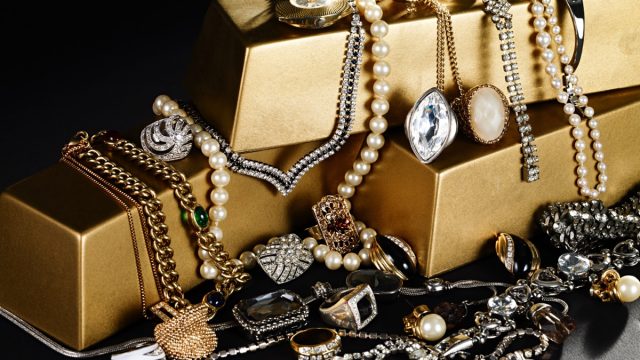
Gold has been prized across many cultures for millennia—used in coins, crowns, jewelry, and more. Central to celebrations, a source of power and the inspiration for exploration and mass migration as adventurers and whole societies search for more of it, no metal has been more precious to our species. Aztecs described gold as "excrement of the gods" and today many advocate for returning the United States to a currency based on the quantity of gold. But have you ever stopped to wonder: why is gold so valuable in the first place?
One reason is the most obvious: It looks great. As Andrea Sella, a professor of chemistry at University College London, said to the BBC, the "secret of gold's success as a currency [is that] gold is unbelievably beautiful." While almost all the other metals on the periodic table are silver-colored (with the exception of copper), gold stands out for its striking yellowish color.
"The color gold causes the eye to move because of the glistening and seemingly moveable surface, similar to the way water moves," Leatrice Eiseman, executive director of Pantone Color Institute, told CNN. "Human eyes are always attracted to any surface that has that glistening or undulating movement. This is because humans need water in order to survive."
As beautiful as it looks, its malleability also makes it ideal for use in creating and decorating objects.
"It is so malleable that you can shape it in any way you wish; even the most primitive of people were able to create beautiful objects out of gold," writes Peter L. Bernstein in his book The Power of Gold: The History of an Obsession. He points out how the gold was hammered down to as thin as five-millionths of an inch for its use on Venetian glasses and "You could draw an ounce of gold into a wire fifty miles in length, or, if you prefer, you could beat that ounce into a sheet that would cover one hundred square feet."
Another reason is that it's stable. As Sella explains, of all the metals on the periodic table, gold can be deemed the most attractive by process of elimination. Alkaline earth metals like barium or magnesium are too reactive or explosive. Most transition or post-transition metals like titanium, aluminum, or copper are either too flimsy, too corrosive or too hard to smelt.
As any economist will tell you, for a resource to be highly valued, it must also be scarce. So metals like iron may have plenty of utility and be attractive in their own way, but they are too abundant to be useful as a currency. On the other hand, many of the noble metals—platinum, palladium, iridium—are too rare to be of much use as a currency. That pretty much leaves silver and gold, and thanks to gold's softness and beauty, it gets the edge.
One additional trait that makes the metal stand above all others: its durability.
As Bernstein explains, "Unlike any other element on earth, almost all the gold ever mined is still around." Despite the fact that you can't build structures, vehicles or durable tools from gold, "When all the steel has rusted and rotted, and forever after that, your great cube of gold will still look like new. That is the kind of longevity we all dream of." And for more amazing facts you can take with you, check out Why Stonehenge Exists—and More of History's Greatest Mysteries!
To discover more amazing secrets about living your best life, click here to follow us on Instagram!





















